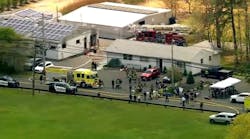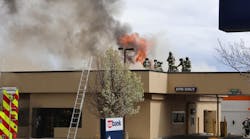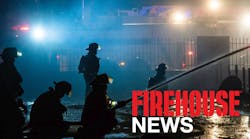SUBJECT: Second- and Third-row Seating Configurations
TOPIC: Third-Row-Seat Occupant Rescue
OBJECTIVE: Given a late-model vehicle with an occupant capacity of seven or more passengers to study and the simulation of a collision with people trapped, the rescue team will develop multiple plans for extrication and removal of third-row-seat occupants.
TASK: The rescue team shall develop a minimum of three tactical plans for extrication and removal of occupants of the third-row seats in a vehicle such as a minivan or sport utility vehicle configured to carry seven or more occupants.
Rescue teams at a collision with people trapped are responsible for having a plan to free the patients from the tangled wreckage and efficiently removing them from the vehicle. Our most frequently trapped patient seems to be the driver, followed by the front-seat passenger. This makes sense because these two positions are the most frequently occupied.
The reality, however, is that there are many makes and models of U.S. passenger vehicles designed to carry seven or eight occupants. Our mission with this University of Extrication column is to look at the challenges of extrication for patients trapped in the second- or third-row seats in these vehicles. Once we see what the challenges are, we must then develop plans for extrication and removal of these rear-seat patients.
Through a brief pictorial review, various configurations of second- and third-row seating designs are presented. This is to encourage rescuers to go to new-car showrooms and see for themselves exactly how these seven- or eight-passenger vehicles are configured. Determine how these seats are positioned: forward-, side- or rear-facing. Find out how the seats secure to the vehicle. Determine whether they are easily moveable or removable and what it will take to cut them apart or forcibly remove them.
Second, rescuers must have tactical plans for opening up the vehicle enough to remove anyone seated in these locations during a rescue incident. Third-row-seat occupants can be removed through three extrication pathways. One consideration is the rear of the vehicle; open the liftgate and remove the back of the rear seats, for example. Patients may also be able to be removed vertically after total roof removal. Third-row-seat occupants may also have to be removed through the side of the damaged vehicle. Work out tactics for sidewall removal. It may be a bit more involved than the typical third-door evolution we do.
TASK: The rescue team shall review and become familiar with the interior seating layout of passenger vehicles designed to carry seven or eight passengers. Secondly, the team shall develop a tactical plan for removal of trapped third-row seat occupants through each of three pathways — rear, top and side.
RON MOORE, a Firehouse® contributing editor, is a battalion chief and the training officer for the McKinney, TX, Fire Department. He also authors a monthly online article in the Firehouse.com "MembersZone" and serves as the Forum Moderator for the extrication section of the Firehouse.com website. Moore can be contacted directly at [email protected].





